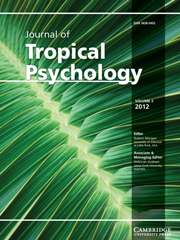No CrossRef data available.
Article contents
Their story: Homeless Indigenous women in Cairns and Mount Isa, Australia
Published online by Cambridge University Press: 14 November 2014
Abstract
Homelessness is affecting Australian Indigenous women disproportionately in comparison with the Australian population. Homeless Indigenous women in Cairns and Mount Isa, Australia, were interviewed about their experiences of homelessness, understanding of causes and services available to them. Reasons for homelessness for the women interviewed circled around relationship breakdowns, patterns of repeated homelessness, lack of access to services in remote areas and lack of affordable housing. The need for affordable and safe housing, suitable to accommodate a variety of family groups, from single women to large families was a recurrent theme.
- Type
- Articles
- Information
- Copyright
- Copyright © The Author(s) 2014




